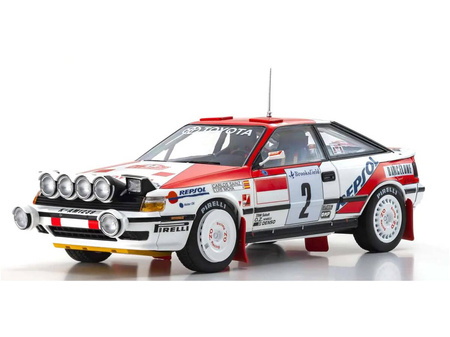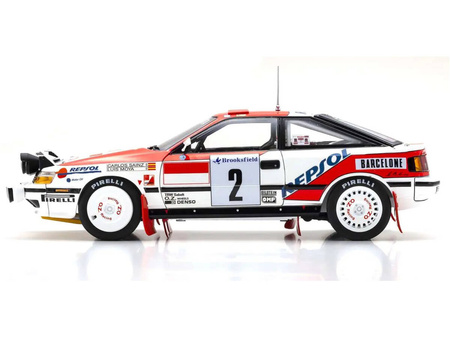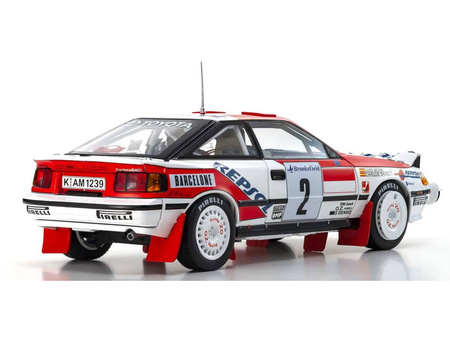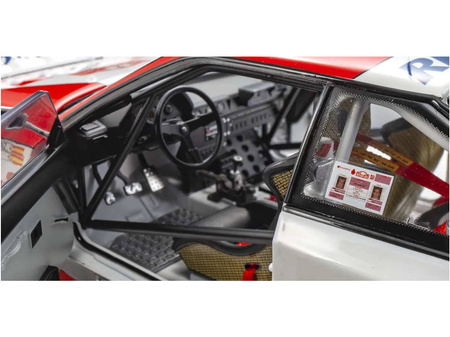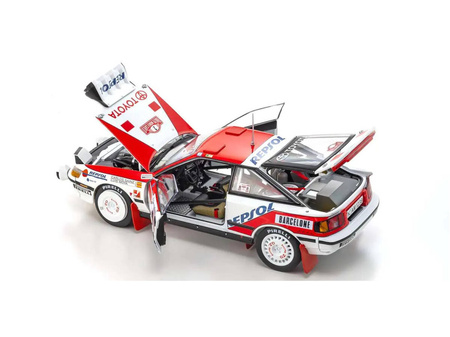1:18 KYOSHO Toyota Celica GT-Four C.Sainz Winner Monte Carlo1991 Nr2 (KS08961B)
Produkty subskrypcyjne w twoim koszyku
Ustaw jedną częstotliwość dostaw dla wszystkich produktów subskrypcyjnych z twojego koszyka co:
Produkty subskrypcyjne w twoim koszyku
SZCZEGÓŁOWE INFORMACJE
1:18 KYOSHO Toyota Celica GT-Four C.Sainz Winner Monte Carlo1991 Nr2 (KS08961B)
Die Cast Collection - realizm i jakość kolekcjonerska.
Funkcja otwierania i zamykania.
Having started participating in the WRC (World Rally Championship) from its inception in 1972, Toyota only fully committed to the competition in 1998. The rationale behind the change in direction from limited participation to full engagement was the dramatic lift of Toyota’s brand recognition and sales in Europe that a WRC victory would bring. The model chosen to execute this plan for world rally domination was Toyota’s first pure-bred 4WD sports car, the Celica GT-FOUR (ST165). Not only was the drive system changed from FR to FF (base model), but the exterior design was a complete shift from the wedge shape of its predecessor to the soft flowing style of the ‘stream surface’ that marked the arrival of a new era. Although results were mixed in its first year, the backing of Toyota’s financial and technical strength evolved the Celica GT-FOUR quickly into a potent rally racing weapon that scored its first victory in its second year of competition. With C.Sainz/L. Moya at the wheel, Toyota broke Lancia Delta’s stranglehold to win the first WRC title for a Japanese car in 1990. The victorious 1990 and 1991 season winning cars have been chosen as models, highlighting the different tarmac and gravel specifications.

Powered by the 3S-GTE type 2-liter in-line 4-cylinder turbo first developed for the Celica, the production car output of 185㎰/24.5kg-m was increased to 295㎰/38.0kg-m in the Gr.A WRC specification (1990). Triangular blocks on the strut tower bar are reinforcing plates.

Sharp edges of the dashboard are precisely recreated with special attention given to replicating feel and texture. Meters are reproduced with water transfer decals, some with pad (tampo) printing.
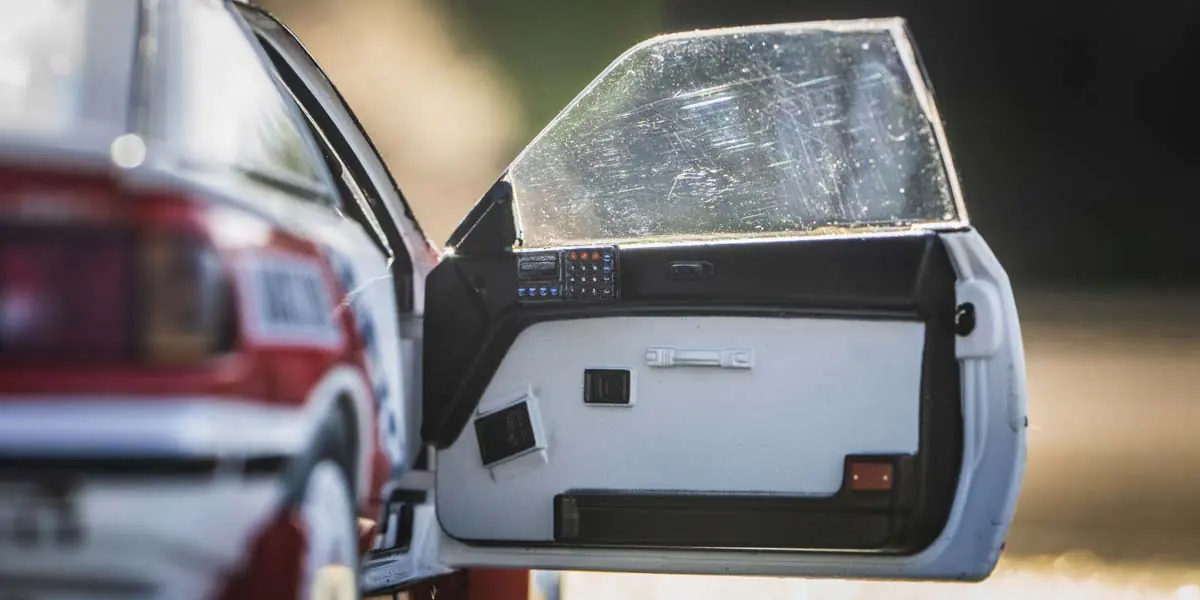
The evolution of 3D CAD technology delivers greater precision in each and every part. For example, molding of the inside door replicates the actual car’s design much more closely. In addition, clearance areas for each moving part can be reduced to a minimum, making it possible to precisely match the original, even though this is an open/close model!

Accurate recreation of the roll cage, which is a feature of rally and motor sports cars, was achieved through extensive trial and error as it was difficult to extract from the mold. While seatbelts and bands can be recreated with molds, they become too thick, so these are cut from sheets.

The carbon Kevlar pattern on the back of the full bucket seats is transcribed from photographs. If the pattern is simply scaled down the pattern becomes lost, so the scale has been adjusted to suit the interior styling. Each part is also precisely molded.

The high-speed range Monte Carlo specification front tires for tarmac combine with the fin wheels used on many racing cars from the late 1980s to the early 1990s to improve aerodynamics and captures the true style of this era.






